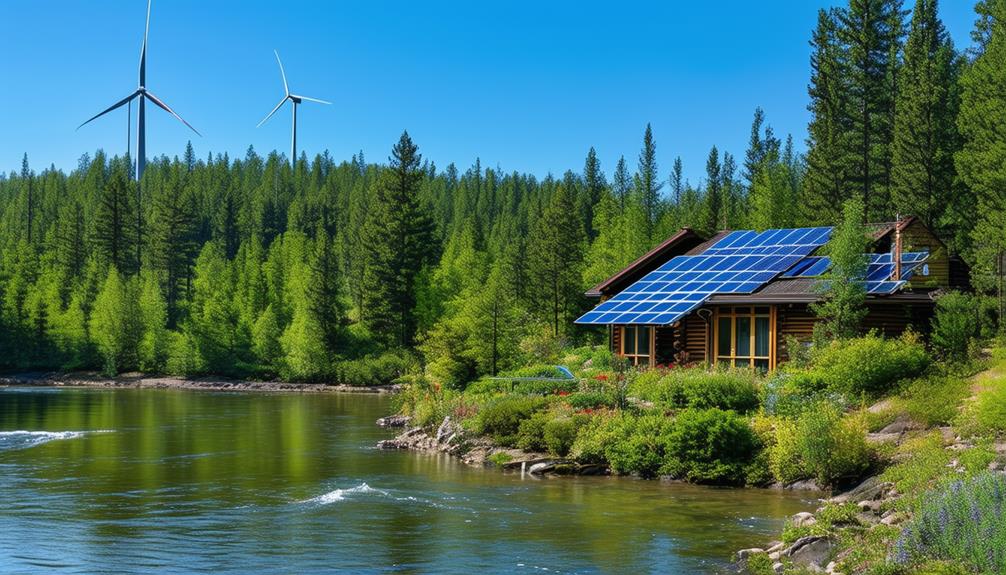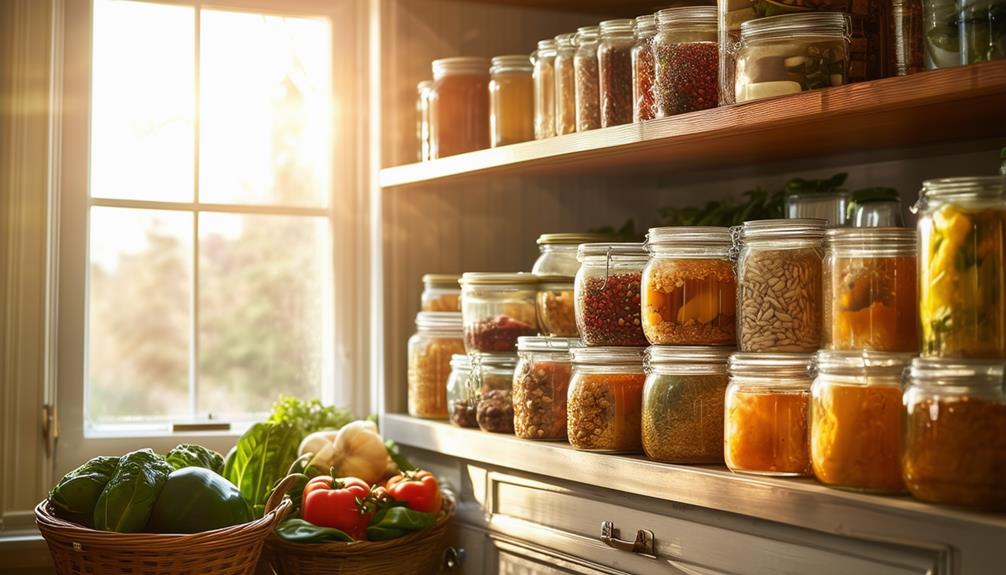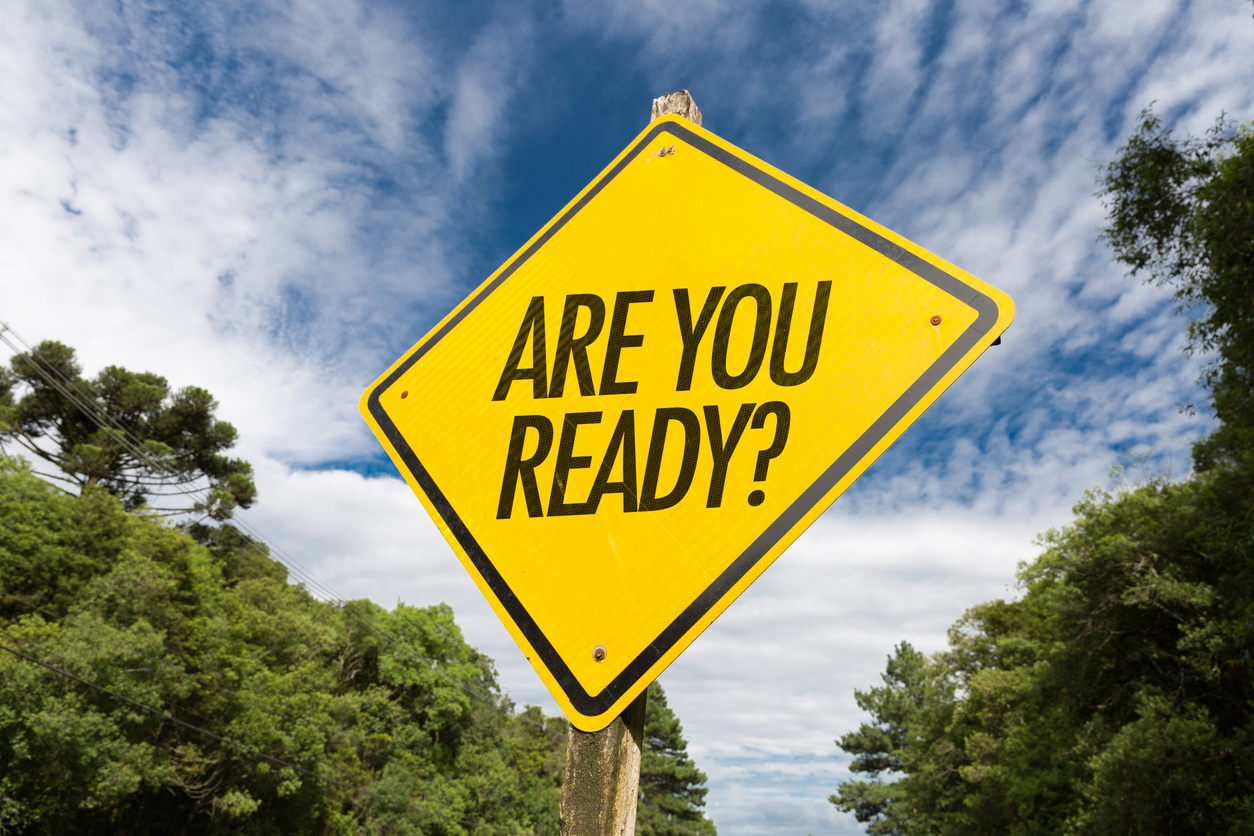Creating a Sustainable Bug Out Location: Water, Food, and Energy

When planning a sustainable bug-out location, you must carefully consider water, food, and energy. Start by identifying reliable water sources such as ponds or wells, and ensure you have proper filtration systems in place.
For food, incorporate a mix of long-term supplies and on-site production through gardening and livestock. Energy solutions should include renewable sources like solar panels and energy-efficient appliances.
Integrating these elements seamlessly is crucial to creating a self-sufficient haven. But how can you effectively balance these components while guaranteeing long-term resilience?
Let's explore the practical steps to achieve this balance.
Choosing a Location

When choosing a bug-out location, prioritize proximity to reliable water sources such as ponds, rivers, or wells to ensure sustainability. Water is essential not only for drinking but also for irrigation, enabling you to grow your own food and achieve self-sufficiency.
Look for fertile land suitable for gardening or farming to maintain a steady food supply.
Beyond water and food, consider energy needs. Evaluate the availability of renewable energy sources like solar panels or wind turbines to provide a sustainable energy supply and reduce reliance on external resources.
Check for nearby natural resources such as wood, which can be used for fuel or building materials. This will support your energy needs and help you maintain and expand your shelter.
Water Sources
When planning your bug-out location, prioritizing reliable water sources is essential. Consider methods such as collecting rainwater, utilizing nearby rivers or lakes, and digging a well.
Ensure you implement effective water filtration and storage solutions to guarantee a safe and sustainable supply of drinking water.
Reliable Water Sources
Securing reliable water sources is crucial for survival, requiring at least 1 gallon per person per day. When planning your bug-out location, prioritize identifying trustworthy water sources. Natural options like ponds and wells are excellent, but don't overlook unconventional sources such as swimming pools or city water lines.
To enhance your water preservation strategy, consider these key elements:
- Filtration systems: Invest in high-quality filtration systems to ensure any water you collect is safe to drink.
- Treatment tablets: Keep a supply of treatment tablets on hand for compact and efficient water purification.
- Collapsible containers: Ideal for storing large quantities of water without taking up much space when not in use.
Additionally, storage solutions like AquaPodKit and WaterBOB can significantly boost your water storage capacity. Assessing and enhancing your water sources with these tools can improve your water sustainability.
Water Filtration Methods
Now that you've identified your water sources, understanding effective water filtration methods is essential to guarantee safe consumption.
Whether you're drawing from a pond, swimming pool, city water, or well water, ensuring its safety is paramount. Water filtration systems are your initial line of defense against contaminants. These systems vary in complexity, from simple portable filters to more elaborate setups that can handle large volumes of water.
Treatment tablets offer a compact and lightweight solution for purifying water. They're easy to use and effective against most pathogens. Simply drop them into your water-filled containers, wait for the recommended time, and you'll have drinkable water.
Collapsible containers are versatile and space-saving, making them perfect for transporting and storing treated water. Products like AquaPodKit and WaterBOB are excellent for short-term storage, especially in emergencies.
The AquaPodKit can be set up in your bathtub to store up to 65 gallons of water, while the WaterBOB can hold up to 100 gallons, ensuring you have an ample supply during critical times.
Storage Solutions Planning
Effective planning for water storage solutions ensures you have a reliable supply during emergencies. When setting up your bug-out property, it's essential to focus on diverse water sources and efficient storage. To maintain a sustainable location, consider multiple aspects of water storage.
First, utilize collapsible containers. These are compact when not in use and can hold substantial volumes of water when needed, maximizing space and flexibility.
Second, invest in filtration systems. Even if you have access to ponds, swimming pools, or well water, filtration ensures your water intake is safe. Filtration systems remove contaminants, making water from various sources potable.
Third, keep treatment tablets on hand. These are crucial for treating water on the go or when primary sources are compromised. They're lightweight and easy to store, ideal for emergency situations.
Enhance your water storage with products like AquaPodKit and WaterBOB, which can store large quantities efficiently. Aim for a water intake of at least 1 gallon per person per day to ensure adequate hydration.
Food Storage

When planning your bug out location, prioritize establishing long-term food supplies and on-site food production.
Store a variety of non-perishable foods to avoid monotony and ensure you have essentials year-round.
Additionally, consider starting a garden and raising livestock to supplement your stored food with fresh produce and meat.
Long-term Food Supplies
Ensuring long-term sustainability at your bug-out location depends on a well-planned strategy for non-perishable food storage. Maintaining a balanced diet is crucial, so store a variety of non-perishable items. Beyond canned goods and dry beans, consider dehydrated meals, freeze-dried fruits, and vacuum-sealed grains to diversify your stockpile. These items have long shelf lives and offer essential nutrients over extended periods.
For a more resilient food storage strategy, consider these three key components:
- Non-perishable food items: Have a robust selection of canned, dehydrated, and freeze-dried foods. These are easy to store and can last for years.
- Small garden: Even a modest garden can supplement your food storage. Growing vegetables and herbs provides fresh produce that can be preserved for later use.
- Raising livestock: Keeping chickens, rabbits, or goats can be manageable and provide a steady supply of eggs, meat, and milk.
Additionally, consider sustainable food procurement by exploring the wildlife in your area. A diverse range of food sources enhances the resilience of your bug-out location, reducing dependency on a single supply chain.
On-site Food Production
To ensure your bug-out location remains sustainable and self-reliant, focus on developing robust on-site food production methods. Start by storing non-perishable food items year-round to maintain a baseline supply.
However, relying solely on stored food can limit variety and nutritional balance. To address this, cultivate a small garden. Growing vegetables and herbs not only boosts food production but also provides fresh, diverse food sources crucial for long-term sustainability.
In addition to gardening, consider livestock options to strengthen your food production. Chickens, for example, provide both eggs and meat, significantly enhancing self-sufficiency. Additionally, keeping rabbits or goats can offer more variety and nutritional value.
Wildlife can also serve as supplemental food sources. Hunting or trapping small game can be an effective strategy during emergencies when your stored and grown food supplies run low.
Energy Solutions
Reliable energy solutions are essential for maintaining a sustainable bug out location. By focusing on renewable energy sources, you can ensure an off-grid lifestyle that's both eco-friendly and energy-efficient.
Here are three key strategies to consider:
- Solar Panels and Wind Turbines: Installing solar panels and wind turbines can provide a steady supply of renewable energy. These systems harness natural resources like sunlight and wind, making your bug out location more self-sufficient and less reliant on external power sources.
- Backup Generators: While renewable energy is ideal, having a backup generator fueled by propane or diesel is crucial for emergencies. These generators can provide reliable power when solar and wind energy are insufficient, ensuring that your bug out location remains functional during critical times.
- Energy-Efficient Appliances and LED Lighting: Reducing energy consumption is as important as generating it. By using energy-efficient appliances and LED lighting, you can maximize your available power. These technologies consume less energy, extending the life of your renewable energy systems and reducing the need for frequent recharges.
Implementing these energy solutions, along with battery storage systems and potentially micro-hydro power, guarantees your bug out location stays powered and sustainable.
Security Measures

Implementing strong security measures is essential to safeguard your bug out location and ensure its long-term sustainability. Begin by installing perimeter fences to establish a physical barrier that deters unwanted visitors and provides a clear boundary for monitoring. Enhance these fences with security cameras, offering real-time surveillance to help you stay vigilant against potential threats.
Next, reinforce windows and doors, as these are common entry points for intruders. Strengthen them with durable materials, locks, security bars, or shatterproof glass. Heavy-duty deadbolts on doors can further increase your protection.
Strengthening structures is another crucial step. Ensure buildings are sturdy enough to resist forced entry by adding extra layers to walls, reinforcing door frames, and securing roof access points.
Regular security assessments are vital for evaluating and prioritizing your defenses. These assessments help identify weaknesses and areas needing improvement.
Maintain firearms and ammunition as a last resort, but remember that a comprehensive security plan relies on multiple layers of protection. By implementing these measures, you'll create a safer, more secure bug out location.
Long-Term Sustainability
Ensuring the long-term sustainability of your bug out location involves securing reliable supplies of water, food, and energy. Focus on these three critical areas to achieve long-term resilience:
- Water Sources: Identify a dependable water source, such as a nearby river, well, or rainwater collection system. Incorporate effective filtration and purification methods to ensure a clean water supply.
- Food Sustainability: Assess the land for its potential to support gardening and farming. Identify crops that grow well in your region and establish a rotating planting schedule. Supplement your food supply with hunting and fishing to diversify and enhance your diet.
- Energy Efficiency: Invest in renewable energy sources like solar panels or wind turbines to minimize dependency on external power supplies. Implement efficient energy management systems to store and utilize energy effectively, ensuring a consistent power supply.
Prioritizing self-reliance and efficient resource management will reduce the need for frequent resupply trips and enhance your location's long-term resilience. By focusing on these areas, you'll create a sustainable bug out location capable of supporting you and your family for extended periods.
Conclusion
Creating a Sustainable Bug Out Location: Water, Food, and Energy
To establish a long-term self-sufficient bug-out location, focus on sustainability in water, food, and energy. Select a location with reliable water sources, develop robust food storage and production systems, and invest in renewable energy solutions.
Incorporate security measures to safeguard your resources. By following these steps, you aren't just preparing for emergencies; you're building a resilient, sustainable haven for the future.




